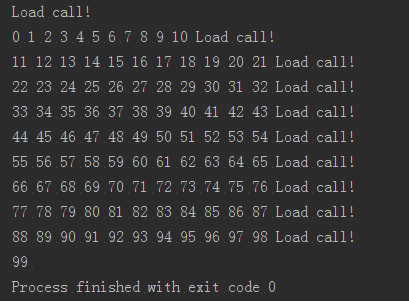一.项目背景
最近项目中需要进行接口保护,防止高并发的情况把系统搞崩,因此需要对一个查询接口进行限流,主要的目的就是限制单位时间内请求此查询的次数,例如1000次,来保护接口。
参考了 开涛的博客聊聊高并发系统限流特技 ,学习了其中利用Google Guava缓存实现限流的技巧,在网上也查到了很多关于Google Guava缓存的博客,学到了好多,推荐一个博客文章:http://ifeve.com/google-guava-cachesexplained/,关于Google Guava缓存的更多细节或者技术,这篇文章讲的很详细;
这里我们并不是用缓存来优化查询,而是利用缓存,存储一个计数器,然后用这个计数器来实现限流。
二.效果实验
static LoadingCache<Long, AtomicLong> count = CacheBuilder.newBuilder().expireAfterWrite(2, TimeUnit.SECONDS).build(new CacheLoader<Long, AtomicLong>() {@Overridepublic AtomicLong load(Long o) throws Exception {//System.out.println("Load call!");return new AtomicLong(0L);}});上面,我们通过CacheBuilder来新建一个LoadingCache缓存对象count,然后设置其有效时间为两秒,即每两秒钟刷新一次;缓存中,key为一个long型的时间戳类型,value是一个计数器,使用原子性的AtomicLong保证自增和自减操作的原子性, 每次查询缓存时如果不能命中,即查询的时间戳不在缓存中,则重新加载缓存,执行load将当前的时间戳的计数值初始化为0。这样对于每一秒的时间戳,能计算这一秒内执行的次数,从而达到限流的目的;
这是要执行的一个getCounter方法:
public class Counter {static int counter = 0;public static int getCounter() throws Exception{return counter++;}
}现在我们创建多个线程来执行这个方法:
ublic class Test {public static void main(String args[]) throws Exception{for(int i = 0;i<100;i++){new Thread(){@Overridepublic void run() {try {System.out.println(Counter.getCounter());}catch (Exception e){e.printStackTrace();}}}.start();}}
}这样执行的话,执行结果很简单,就是很快地执行这个for循环,迅速打印0到99折100个数,不再贴出。
这里的for循环执行100个进程时间是很快的,那么现在我们要限制每秒只能有10个线程来执行getCounter()方法,该怎么办呢,上面讲的限流方法就派上用场了:
public class Counter {static LoadingCache<Long, AtomicLong> count = CacheBuilder.newBuilder().expireAfterWrite(2, TimeUnit.SECONDS).build(new CacheLoader<Long, AtomicLong>() {@Overridepublic AtomicLong load(Long o) throws Exception {System.out.println("Load call!");return new AtomicLong(0L);}});static long limits = 10;static int counter = 0;public static synchronized int getCounter() throws Exception{while (true){//获取当前的时间戳作为keyLong currentSeconds = System.currentTimeMillis() / 1000;if (count.get(currentSeconds).getAndIncrement() > limits) {continue;}return counter++;}}
}这样一来,就可以限制每秒的执行数了。对于每个线程,获取当前时间戳,如果当前时间(当前这1秒)内有超过10个线程正在执行,那么这个进程一直在这里循环,直到下一秒,或者更靠后的时间,重新加载,执行load,将新的时间戳的计数值重新为0。
执行结果:
每秒执行11个(因为从0开始),每一秒之后,load方法会执行一次;
为了更加直观,我们可以让每个for循环sleep一段时间:public class Test {public static void main(String args[]) throws Exception{for(int i = 0;i<100;i++){new Thread(){@Overridepublic void run() {try {System.out.println(Counter.getCounter());}catch (Exception e){e.printStackTrace();}}}.start();Thread.sleep(100);}}
}
在上述这样的情况下,一个线程如果遇到当前时间正在执行的线程超过limit值就会一直在while循环,这样会浪费大量的资源,我们在做限流的时候,如果出现这种情况,可以不进行while循环,而是直接抛出异常或者返回,来拒绝这次执行(查询),这样便可以节省资源。


)




)



解决方法...)

)

![父组件访问子组件中的数据(父子组件通信案例:父组件访问子组件$refs[‘子组件‘],子组件传递数据给父组件(父组件中使用v-model))](http://pic.xiahunao.cn/父组件访问子组件中的数据(父子组件通信案例:父组件访问子组件$refs[‘子组件‘],子组件传递数据给父组件(父组件中使用v-model)))
![[设计模式]6. C++与职责链模式(chain of rsponsibility pattern)](http://pic.xiahunao.cn/[设计模式]6. C++与职责链模式(chain of rsponsibility pattern))

)

